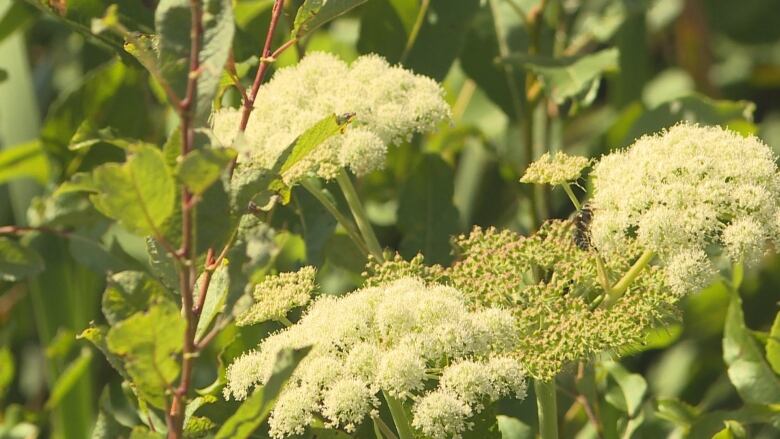Look out for this growing invasive plant species on P.E.I.
Woodland angelica is quickly spreading across the Island, choking out other plants

A new invasive plant species is quickly spreading throughout P.E.I., and one retired biologist is warning Islanders to take care if trying to handle it.
Rosemary Curley, a retired biologist and volunteer withthe PEI Invasive Species Council, said woodland angelica arrivedon the province about 20 years ago but has recently been spreading across the Island.
"It displaces other plants and it can take over large areas," Curley said.
"This one tends to spread rapidly and form large clumps and become something we don't want."
The flat topped white flower grows to aboutfive feet high, and resembles the look of wild carrots which are more commonly known as Queen Anne's lace.It cancause an allergic reaction in humans through it's sap, and can lead to itching and redness.
Spreading throughout P.E.I.
According to Curley, woodland angelica is native to Europe but can be found throughout the Maritimes.
Though she's unsure of how it arrived on P.E.I.,Curleysaid there's an abundance of the plant in New Brunswick, and it likely got transported from there through motor vehicles.

"It is spreading so I think we'll see a lot more of it. I think it will become a very common roadside plant, especially in ditches," she said.
Curley said it spreads through its roots andmoves through waterways.Seeds can also be transported by machinerylike snow plows or farming equipment.
So far, the plant is predominantly found in Kings County, but Curleysaid it's spreading toward Queens County.
Get used to it
While woodland angelica can displace other plants, Curleyadvises to be careful if handling the plant.
"I think it would be a good idea to avoid it ... because there are some other look-alikes like hemlock, which is a poisonous plant," she said.

"They're all hard to tell apart, the plants in this family, so definitely don't rely on guesswork. Rely on absolutely knowing."
Curleysaid if you do start to notice the plant growing on your lawn and want to remove it, protect your skin,cut it down as soon as possiblebefore it seeds and take out the roots.
But she adds that getting rid of it might not be easy.
"I think people will just have to get used to it quite frankly because I think it will spread."












_(720p).jpg)


 OFFICIAL HD MUSIC VIDEO.jpg)
.jpg)



























































































